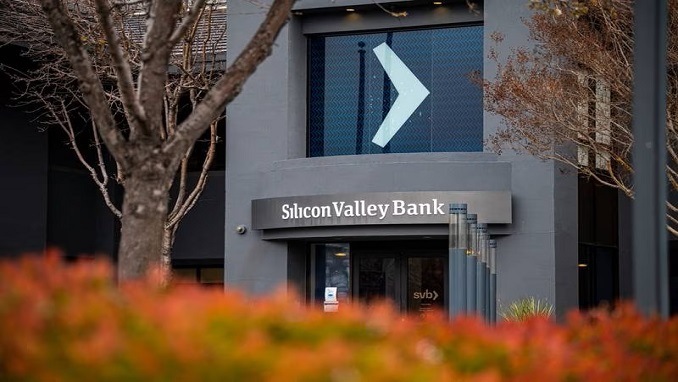
The tech-heavy lender Silicon Valley Bank (SVB) Financial Group was closed on Friday by California banking regulators in the largest bank failure in the US since Washington Mutual during the height of the 2008 financial crisis.
The California Department of Financial Protection and Innovation closed Silicon Valley Bank in Santa Clara, California, appointing the Federal Deposit Insurance Corporation as a receiver.
US regulators issued a statement saying that all insured depositors will have full access to their insured deposits no later than Monday morning when the main office and all branches of Silicon Valley Bank will reopen.
In an effort to protect depositors as a crisis rippled through global markets and hit banking stocks, regulators are moving quickly to dispose of the bank’s assets.
As of December 31, 2022, Silicon Valley Bank – the first FDIC-insured institution to fail this year- had about $209 billion in total assets and about $175.4 billion in total deposits.
Concerns have arisen that a large amount of SVB accounts hold more than the FDIC-insured funds that cover amounts of up to $250,000.
After its efforts to raise capital through a stock sale failed and affected markets, SVB Financial Group – which had 17 branches in California and Massachusetts – was exploring options, including a sale, but SVB shares were halted yesterday after tumbling as much as 66% in pre-market trading.
Noting that it’s a matter of concern when banks experience losses, Treasury Secretary Janet Yellen said that they’re aware of recent developments and were monitoring the situation.
The Treasury Department said in a separate statement later that banking regulators have effective tools to address this type of event and that Secretary Yellen is fully confident that they’ll take appropriate actions so that the banking system remains resilient.
The White House also expressed its faith and confidence in US financial regulators, with Cecilia Rouse, who heads the Council of Economic Advisers, stressing that the US banking system was fundamentally stronger compared to the 2008 financial crisis.

Be the first to comment